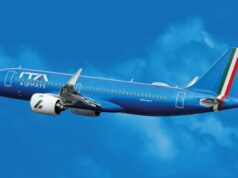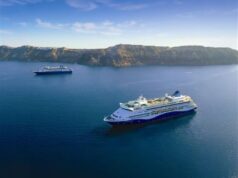 The impact of technological innovation and evolving media channels on tourism communication was the focus of the 3rd UNWTO International Conference on Tourism and the Media, part of an ongoing series aimed to lend tourism a higher level of editorial recognition (2-3 December 2013, Estoril, Portugal).
The impact of technological innovation and evolving media channels on tourism communication was the focus of the 3rd UNWTO International Conference on Tourism and the Media, part of an ongoing series aimed to lend tourism a higher level of editorial recognition (2-3 December 2013, Estoril, Portugal).
Centered around the theme, “How new media is shaping the news”, the Conference addressed, among others, the issues of tourism in today´s media coverage, the new media environment, the emergence of bloggers as influential news sources, and the transversal impact of technology on all communication formats.
Opening the Conference, UNWTO Secretary-General, Taleb Rifai, said “while tourism coverage by mainstream, business and news agencies is growing, there is still much room for tourism to have greater journalistic recognition. New media can bridge this gap. In today´s interconnected world, tourism communication has evolved from being an exclusive encounter to an inclusive experience.”
“Portugal has made a strategic decision in terms of promotion strategy, and that was to give a higher priority to new media and online communication as a means to adapt to the changes occurring in the markets” said Adolfo Mesquida Nunes, Secretary of State for Tourism of Portugal.
Addressing over 200 participants from 30 countries, including private and public tourism stakeholders, media and academia, the Conference underscored the following key trends:
News generation has evolved from a top-down “analogue” format into an “digital” interactive experience;
With bloggers as complementary sources of information to traditional media, the challenge lies in establishing their credibility as reliable and independent sources. Credible traditional media outlets remain relevant for reliable information;
Effective blogs connect by eliciting audience empathy; the key lies in creating different content for different aims and formats;
Users today are double influencers: they contribute real-time information through social media and move content providers to cater the information they are demanding;
Segmentation of contents and audiences is growing as a consequence of increasing interactive media use and must be factored in by the tourism sector in their communication and promotion outreach;
The key to communicating tourism is in telling a story, offering the bigger picture of the economic, social and environmental impact of tourism;
Given that travelers promote a country through various media formats and the social network, Destination Management Organizations (DMOs) need to become content aggregators and platforms for user-generated content;
Maximizing new media entails creating an inclusive environment for citizen journalists to disseminate tourism´s message, either by talking about a destination, a product or the socio-economic power of tourism;
There is no way around increased audiovisual content production by private and public tourism stakeholders, acknowledging growing bandwidth and user expectations on enriched and diverse communication formats.
Organized in cooperation with Turismo de Portugal, the Conference gathered key speakers and panelists, including the Conference media partner CNN International’s anchor Nina dos Santos, Portugal’s public broadcaster Rádio e Televisão de Portugal (RTP) anchor João Adelino Faria as well as representatives from Condé Nast (USA), Apple Tree Communications (Spain), German broadcaster Deutsche Welle (Germany), Google and NH Hoteles (Spain), as well as influential social media players from Brazil, Kenya and Uruguay.











